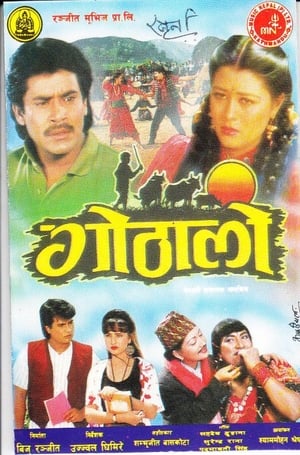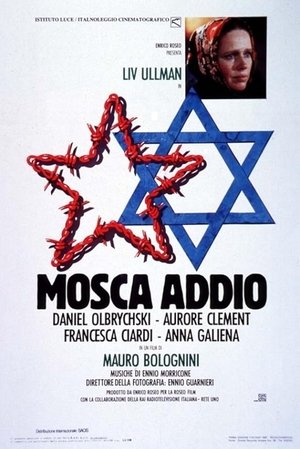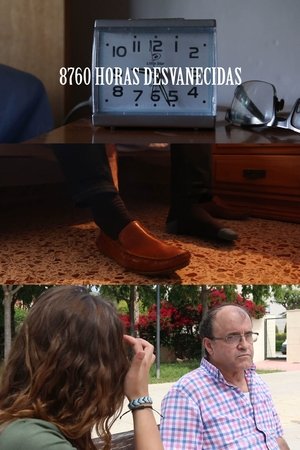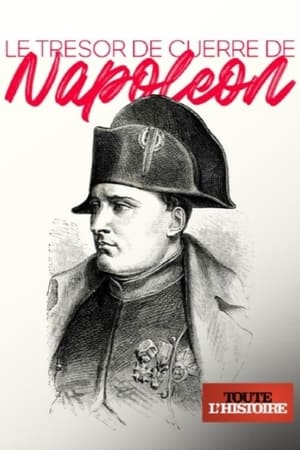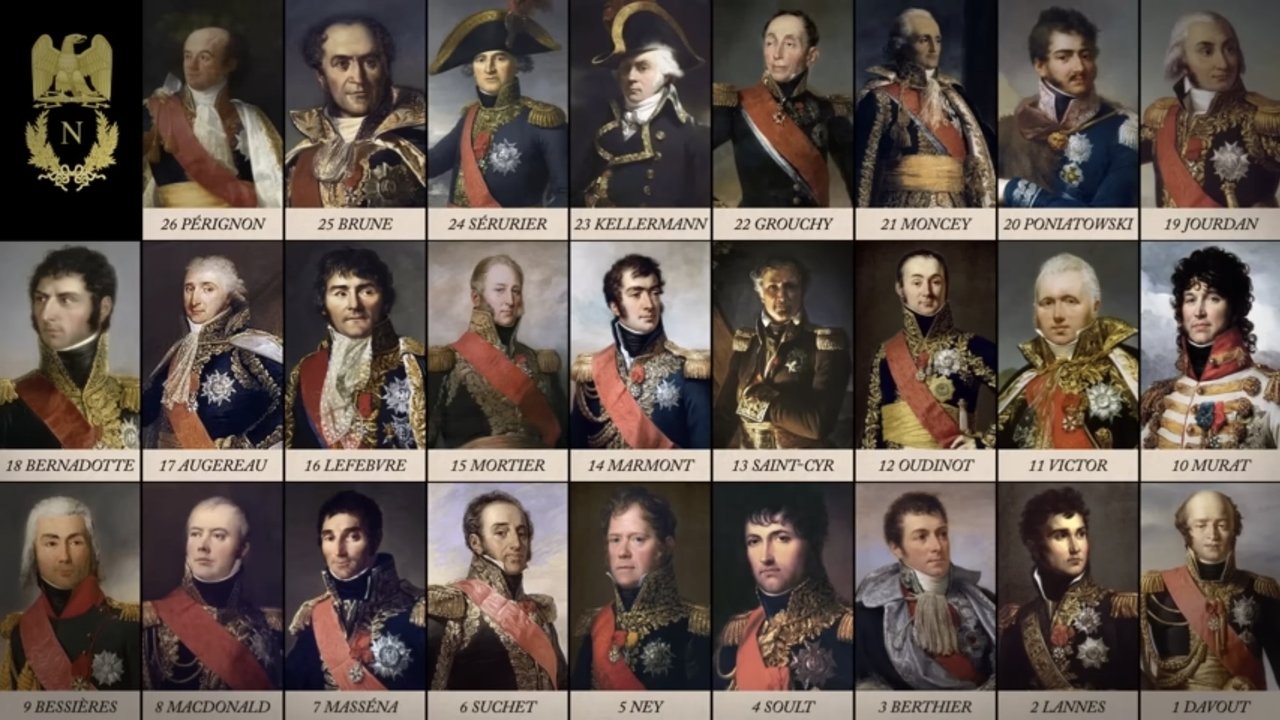
Napoleon's Marshals, Ranked(2024)
In 1804 Napoleon created 18 'Marshals of the Empire', to serve as the senior officers of the Grande Armée. He created a further 8 before his abdication in 1814. A few were aristocrats, but others were the sons of shopkeepers or tailors. The most favoured became princes and kings. Among their ranks were legendary figures such as Marshals Lannes, Ney, Soult, Davout and Masséna, but also less well know figures like Pérignon, Brune and Moncey. Our series explores the lives of all 26 Marshals, and ranks them according to our own judgement of their achievements as Marshals.
Movie: Napoleon's Marshals, Ranked
Top 1 Billed Cast
Narrator
Video Trailer Napoleon's Marshals, Ranked
Recommendations Movies
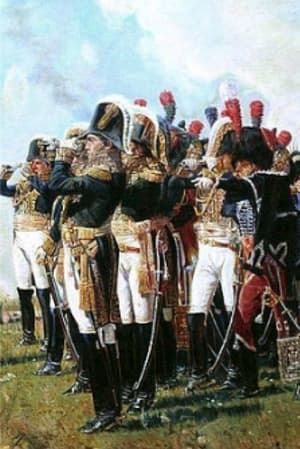 8.0
8.0Napoleonic Wars: Battle of Friedland 1807(en)
Napoleon brings his war against Russia and Prussia to an end with victory at Friedland, leading to the famous Tilsit conference, after which Napoleon stood at the peak of his power.
 0.0
0.0Unified MMA 50(en)
Unified MMA 50 took place Friday, March 31, 2023 with 10 fights at River Cree Resort & Casino in Enoch, Alberta, Canada.
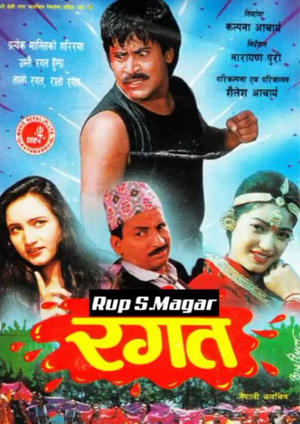 9.3
9.3Ragat(ne)
Ragat (Blood) is a powerful Nepali film that highlights caste discrimination and social injustice. The story follows Krishna, a young man from a lower-caste family, who bravely fights against the oppression of the rich and upper-caste elites. Hemant Kaji, a wealthy and influential man, strongly believes in caste superiority and looks down on the poor. Amidst this division, Laxmi, a girl from a rich family, falls in love with Gopal, a lower-caste boy. Defying societal norms and family pressure, they marry against their parents' wishes, challenging the rigid caste system. Their love becomes a symbol of change, but their struggle is met with resistance. In the end, Radha, Laxmi's caring aunt, tragically loses her life, leaving behind a message that all human blood is the same-hot and red. Directed with a strong social message, Ragat questions why caste discrimination still exists in Nepali culture and calls for equality and justice.
 9.8
9.8Timro Chanchale Chulbule Yoban(en)
The music video Timro Chanchale Chulbule Yoban weaves a story of longing, fleeting connections, and unfulfilled desires. Aanchal and Udip, a married couple from Nepal, are struggling with an unhappy relationship. Seeking a break, Aanchal travels to the UK for a holiday. Meanwhile, Paul, a handsome and strong man living in London, dreams of finding the perfect woman to marry. Their paths cross at Tower Bridge, where Paul is instantly captivated by Aanchal's beauty. Mesmerized, he begins to follow her through the city-Tower Bridge to Waterloo Station, and finally to London Bridge-imagining a future together filled with love and happiness. But when Paul turns to approach her, Aanchal suddenly disappears. Reality strikes, and Paul learns she is already married, her sadness hidden behind her beauty. This realization brings Paul back to reality, leaving him to reflect on the bittersweet nature of love and missed chances.
 7.3
7.3Tyler Perry's I Don't Want to Do Wrong - The Play(en)
Yolanda is a woman who is anxiously waiting for her new husband to return from fighting in Iraq. Financial struggles force her to move back home with her parents Reverend Wallace and Hattie. It will take lots of laughter, love and prayers to keep the entire family together under one roof.
 4.2
4.2L.A.: A Queer History(en)
Most consider the NY Stonewall Riots of 1969 to be the birth of the Gay civil rights movement. But there have been activists, artists and innovators in L.A. since the turn of the 20th century. L.A. A Queer History is an educational, exciting and emotional epic saga spanning nearly a century featuring artists, scholars and first hand accounts from LGBTQ elders who lived it.
 5.9
5.9Marching in Darkness(it)
A young recruit to the Italian army discovers and rejects the seedy world of soldiers who prostitute themselves to supplement their income. But before leaving this world he is raped by a highly-respected senior officer and must decide whether to risk bringing proceedings against him.
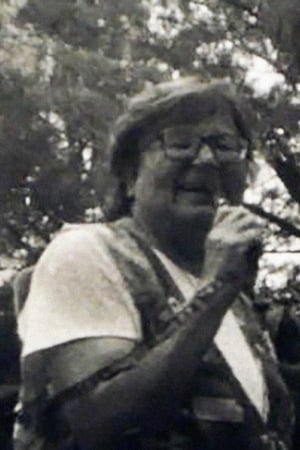 8.8
8.8The Good Life(en)
I documented the First Story's walking tour with Elder Carolyn King with a manual time-lapse on Super-8. Reconciling myself as a mixed-race indigenous Colombian settler 'walking the red road' while being a person with physical disabilities. Learning to live mino-bimaadiziwin as a settler to Turtle Island and Tkaronto. (Jaene F. Castrillon)
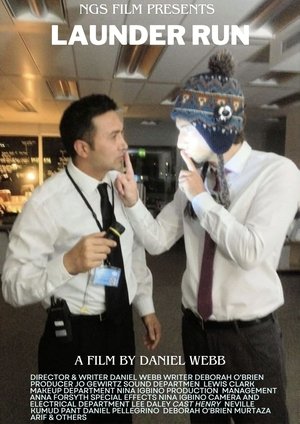 9.7
9.7Launder Run(en)
Launder Run tells the story of Jake, a man returning to his gritty hometown after years away, carrying the weight of a troubled past. The film opens on a rainy Saturday afternoon as Jake trudges through a bleak estate, visibly exhausted and clutching a plastic bag. Arriving at his sister Sue’s chaotic, unkempt flat, he confronts the ruins of his old life—a dirty fridge, a cluttered bedroom reduced to storage, and the ghosts of a once-close family. Seeking solace, he revisits his old pub, a place teeming with memories. As he steps inside, the bartender recognizes him with shock, hinting at Jake’s mysterious past and the reasons for his long absence. “Lounder Run” explores themes of homecoming, redemption, and the unshakable grip of one’s origins.
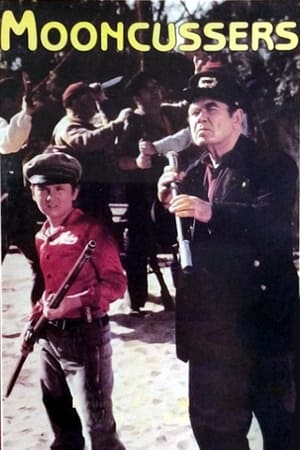 5.0
5.0Mooncussers(en)
A young boy discovers the existence of a group called the Mooncussers - a gang of pirates that work at night and sends out false homing signals to ships at sea. The ships then crash on the shore, where they are looted by the gang.
 5.7
5.7Adam and Eve(it)
God casts Adam and Eve out of the Garden of Eden because Eve decided to have a fling with a visiting Cro-Magnon named Bearkiller. The disgraced couple find themselves on the outside up against an assortment of various dinosaurs, flying monsters and cannibals.
 4.7
4.7The Greatest Ears in Town: The Arif Mardin Story(en)
The Greatest Ears in Town is an insightful documentary and testimonial to Arif Mardin; the producer, arranger, musician and multi Grammy award winner.
Similar Movies
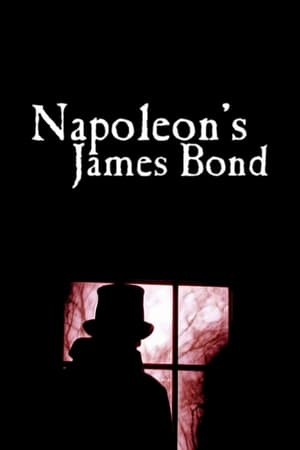 5.5
5.5Napoleon’s James Bond(de)
Charles Louis Schulmeister (1770-1853) was a smuggler and a revolutionary, but also a chief of police and Napoleon Bonaparte's favorite spy. A look back on his adventurous life with the purpose of unraveling the many mysteries of his unique path.
 7.2
7.2Napoleon: Destiny and Death(fr)
May 5, 1821. Napoleon Bonaparte, deposed emperor exiled on the island of St. Helena, is about to take his last breath. The son of a Corsican family, he has been close to death on many occasions since, as a young captain in the revolutionary army, he seized Toulon from the royalists in 1793.
 8.0
8.0Napoleon's First Victory: The Siege of Toulon 1793(en)
It was during this siege that young Napoleon Bonaparte first won fame and promotion when his plan, involving the capture of fortifications above the harbour, was credited with forcing the city to capitulate and the Anglo-Spanish fleet to withdraw.
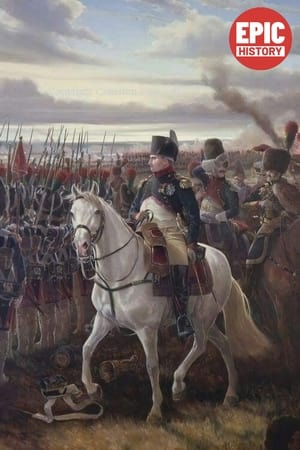 0.0
0.0Napoleonic Wars: Battle of Austerlitz 1805(en)
First engagement of the War of the Third Coalition and one of Napoleon’s greatest victories at Austerlitz in 1805.
 7.0
7.0Andreas Hofer. Held wider Willen(de)
During the Napoleonic Wars at the beginning of the 19th century, Andreas Hofer became a Tyrolean folk hero. As the head of a resistance movement, he became caught up in a dangerous political game of interests between the French and Austrians, Napoleon and the Habsburgs. After the defeat at Austerlitz, the Habsburgs had to cede Tyrol to the Bavarian kings in 1805. The liberal Bavarians implemented numerous reforms in Tyrol, including religious reforms, which met with resistance from the rural population. The young Archduke Johann wanted to take advantage of their discontent. In Andreas Hofer, the commander-in-chief of the Tyrolean troops, the brother of Emperor Franz I finds a loyal patriot whom he can use for his political moves. The Tyrolean revolt against the French and Bavarians puts Napoleon in a tight spot. In several battles, the rebels succeed in defeating the Bavarian and French troops, but not in defeating them for good.
 8.0
8.0Napoleonic Wars: Battle of Friedland 1807(en)
Napoleon brings his war against Russia and Prussia to an end with victory at Friedland, leading to the famous Tilsit conference, after which Napoleon stood at the peak of his power.
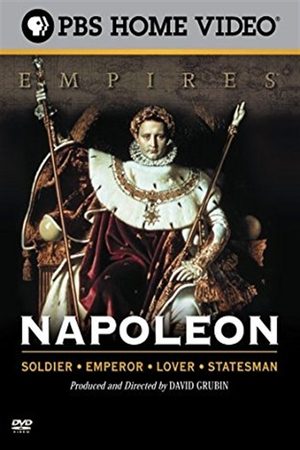 7.0
7.0Napoleon(en)
In David Grubin's NAPOLEON watch Napoleon's rise from obscurity to victories that made him a hero to the French people and convinced him he was destined for greatness. Learn of his love for Josephine Beauharnais, and his rise to Emperor. Witness his extraordinary achievements and ultimately his fall, his final battles, his exile to Elba, and his defeat at Waterloo. For nearly two decades he strode the world stage like a colossus -- loved and despised, venerated and feared. From his birth on the rugged island of Corsica to his final exile on the godforsaken island of St. Helena, NAPOLEON brings this extraordinary figure to life.
Napoleon’s Downfall: German Campaign 1813(en)
Documentary by Real Time History chronicling Napoleon’s defeat in the 1813 campaign which ended the domination of the First French Empire
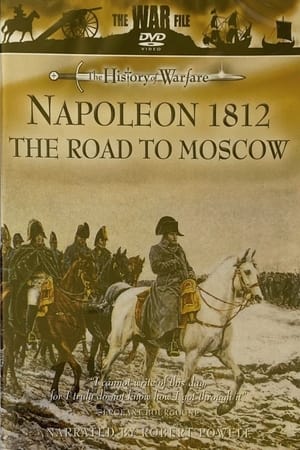 0.0
0.0Napoleon 1812 - The Road to Moscow(en)
It was to be Napoleon Bonaparte's greatest adventure; an invasion of Russia with an army of more than 650,000 men, the largest the world had yet seen. The Emperor's irresistible progress into the vast Russian interior saw many brutal conflicts including the Battle of Borodino, one of the bloodiest day's fighting in military history. Napoleon would not be defeated in battle but by Russian guile and the savages of winter snows. To this day the infamous retreat from Moscow epitomises the suffering of ordinary soldiers. This documentary is a powerful record of one of history's greatest military disasters, and features period imagery, dramatised "eye-witness" accounts, expert analysis, and extensive footage from the Oscar-winning Russian film "War and Peace".
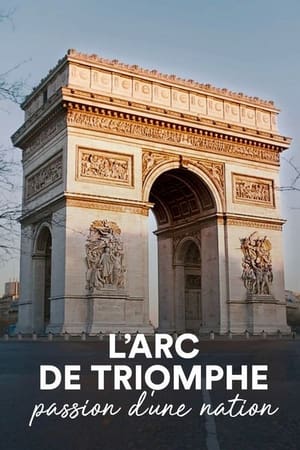 8.0
8.0The Arc de Triomphe: A Nation's Passion(fr)
The pride of Napoleon's victories, the Arc de Triomphe, whose first stone was laid in 1806 at the top of the Champs-Élysées, is, along with the Eiffel Tower, one of the most visited monuments in the French capital. Wanted by an emperor, inaugurated under the reign of a king (Louis-Philippe) and sanctuarized by the Republic, this patriotic temple polarizes the passions of a whole nation. A historical portrait before "packaging", which teems with anecdotes and unsuspected details.
The Battle of New Orleans: A Meaningful Victory(en)
The Battle of New Orleans: A Meaningful Victory explores how the British misjudged their opponent and miscalculated the complexities of the battle ground. It also describes why the multi-cultural population of New Orleans proved the naysayers wrong about their loyalties to a young nation. WYES Community Projects Producer Marcia Kavanaugh and Tom Gregory hosted and produced this documentary.
The Waterloo Collection: Ligny and Quatre Bras - Part 1(en)
This film gives an overview of Napoleons return to France in 1815 before covering in detail the Battles of Ligny and Quatre Bras. Filmed on the Battlefields in Belgium using re-enaction footage expert Presenters follow the Emperors brilliant initial plan which however soon begins to fall apart due to flaws in the French staff, Napoleons arrogance and the courage and fighting ability of the Allied Troops. Both these battles deserve to be better known but they have been overshadowed by Waterloo the culmination of the Campaign
The 95th Rifles 1809 - 1812(en)
95th Rifles 1809 to Salamanca is the second DVD in 95th Rifles trilogy of films and part of The Peninsular Collection from BHTV . The DVD explores the history of the 95th Rifles, who were masters of the battlefield and particularly skilled in skirmishing. Held in high esteem by the French and Allies alike, they played a momentous role in the outcome of the Peninsular War. Following the events set out in the Salamanca DVD, this film serves as a prequel to explain the years leading up to the Battle of Salamanca, starting with the aftermath of Sir John Moore’s retreat to La Corunna in the winter of 1808/1809.
95th Rifles - Dress and Equipment(en)
During the Napoleonic Wars the British Army realised that it needed skirmishers, as a result it raised 2 Rifle Regiments both armed with the icon Baker Rifle. This programme explains how the Riflemen of the 95th Rifles were dressed and equipped. It is an ideal accompaniment to our Series on the 95th Rifles.
Victory and Pursuit: The Waterloo Collection - Part 4(en)
This final part takes us through the dramatic events when Wellington’s Anglo-Dutch Army aided by Blucher’s Prussians defeat Napoleon. The French army was outfought and Napoleon was out-generaled by Wellington. At Wavre Grouchy beat the Prussian rearguard before retreating to France. Meanwhile, the Anglo-Dutch army counted the bloody cost of the previous days fighting while Wellington wrote his controversial Waterloo Dispatch and the vengeful Prussians pursued the French towards Paris, leading to Napoleon's abdication and the occupation of the city by the Allies.
 0.0
0.0Waterloo(fr)
However impressive the site is, however bossy the guides are, the visitors of the Musée Napoléon listen only absent-mindedly. Does this young lady really care about the tragic destiny of emperor Napoleon or Europe's changing face or isn't she more interested in her won reflection in a window case? And isn't the camera operator more prone to film the cornet wimples of visiting nuns than the fossilized remains of Napoleon's fallen grandeur...?
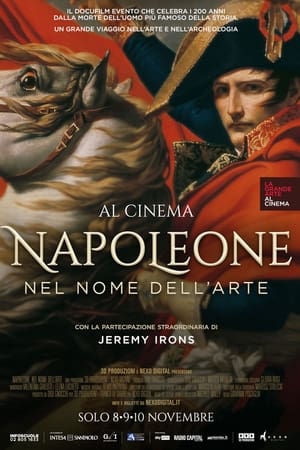 8.2
8.2Napoleon: In the Name of Art(it)
The documentary tells how Bonaparte's passion - sometimes Bonaparte's obsession - for art and knowledge, has changed the face of modern culture: from the birth of schools, libraries and public museums (including Brera and the Louvre) to foundation of Egyptology thanks to the Egyptian campaign, from the extraordinary archaeological discoveries to the looting of works of art, up to the paintings and sculptures dedicated to him. We will enter the mind of Napoleon and his literary predilections, his psychology, his immoderate passion for self-affirmation, which so much inspired men of power, intellectuals, dictators over the following centuries.


